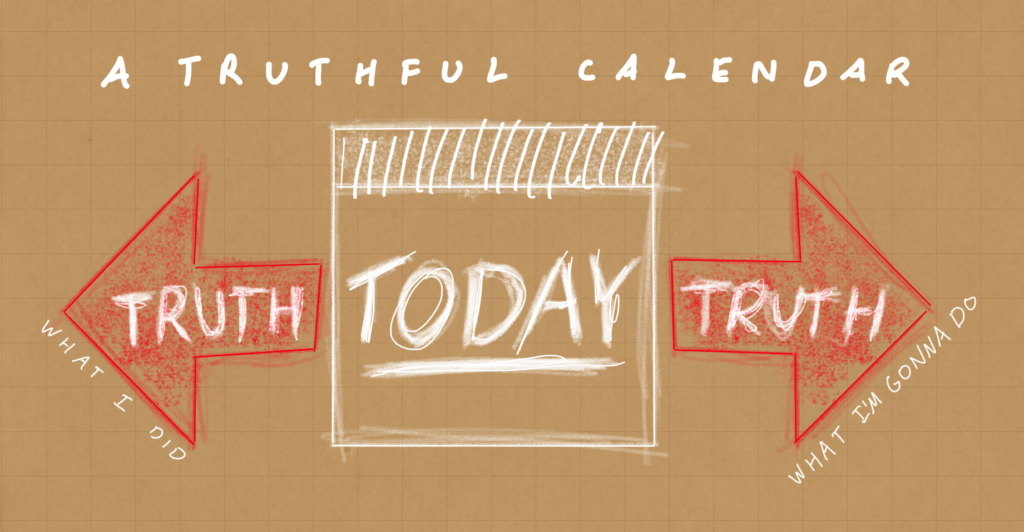I used to do freelance videography for legal depositions. I’d set up a camera and microphones to record lawyers interviewing someone for a court case. One time, an old businessman was being deposed. The smug young lawyer hammered him with questions. Stuff about the history of the business and a partnership arrangement going back to the 70s and 80s. After each question, the man dug into a box, pulled out a datebook, and answered with a precise ease, referencing his old analog planners. The books were truthful, not hopeful, and all the more useful because of it.
My own calendar is a source of truth both forward and back. Forward: stuff I really plan to do. Back: stuff I really did. It might not persist for decades, but it’s working for now.

While I hope not to be deposed any time soon, I’m often looking back a week or so in my calendar to catch up on tasks and find things to follow through on. Doing so is easier when the calendar reflects reality — I don’t have to have hold in my brain whether or not a particular meeting actually happened. It’s on the calendar or it’s not. Same for future planning. There’s no “I might be available for lunch that day.” I am or I’m not.
I extend the truthfulness to things like meetings with travel time. If it’s a one-hour meeting offsite, and I need 30 minutes to get there and 30 minutes to get back, that’s three appointments: travel (30m), meeting (60m), travel (30m). I don’t want to have to constantly investigate how long the meeting actually is, or accidentally arrive hour early on a particularly distracted day.